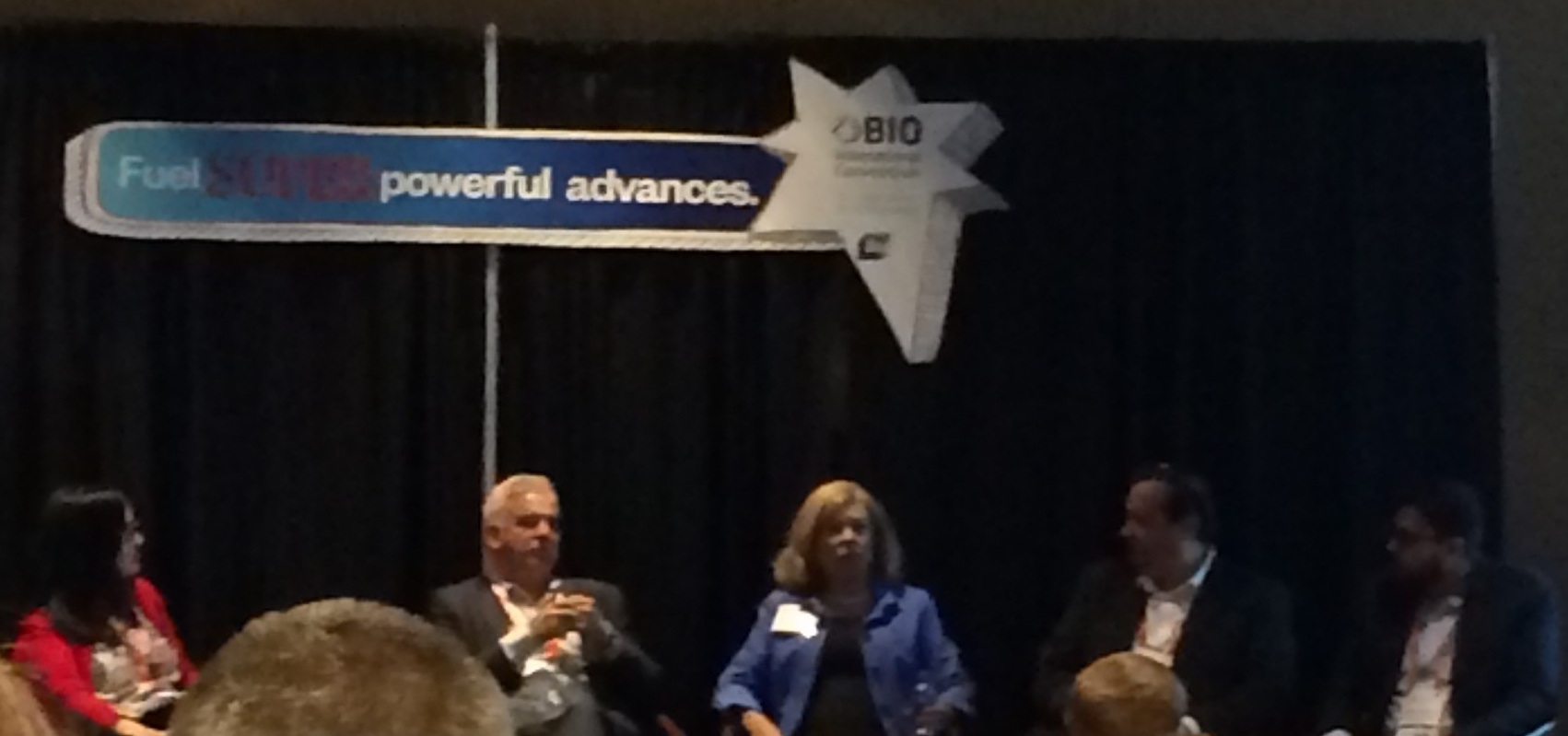
CTTC attends the BIO conference each year to meet with pharmaceutical and biotech companies and to market Vanderbilt’s technologies available for licensing. Conference attendance is about 15,000 people from large and small companies with representation from around the world. Prior to the conference we reach out to companies that might be able to develop Vanderbilt technologies to request in-person meetings. Much of our time during the conference is spent in individual partnering meetings where we sit down with business development professionals at companies to learn about their needs and to share details about Vanderbilt technologies that might be of interest to them.
2015 BIO Conference: What we heard from industry when showcasing Vanderbilt’s therapeutic programs
After meeting with 30+ companies in one on one meetings in addition to ad hock unscheduled meetings it is somewhat difficult to boil down all the takeaways to a short paragraph, however there were several consistent messages heard from our industry colleagues. The first is that there is a heightened interest in autoimmune disorders within the biotech research currently. Company after company inquired as to Vanderbilt’s assets in this area. And while there still seemed to be an exodus from neuro related programs, the companies that have stayed appear to be doubling down and taking advantage of the void from the recent competitor exodus. However, a shift from merely symptomatic to disease modifying and/or genetic linked targets appear to be important in neuro, as well as other areas/indications. Many companies were very interested in biologics, whether this is motivated by legislation and legal rulings is unknown. Vanderbilt’s biologic assets are not as vast as the small molecule assets, but we probably spent equal time discussing them. One of the best take away messages was that many companies were more interested in earlier partnering of programs than had been expressed in recent years.
Industry trends from the BIO 2015 conference
CTTC representatives attend BIO to meet in person with industry representatives and learn about opportunities to license or collaborate on the development of Vanderbilt technologies. The conference was also a great forum to learn about recent and emerging trends within the pharmaceutical and biotechnology industries. Here are a few of the themes that stood out as relevant to Vanderbilt’s community of innovation.

Investment continues to flow to drug discovery projects with Orphan/Rare Disease indications. It may seem counterintuitive, but the financial value of a drug for a small market might be perceived as greater than a drug for a large market. The financial incentives for drug development provided by the Orphan Drug Act and the Orphan Drug Tax Credit continue to bolster interest in drugs to treat rare diseases, and in 2014 this segment raised $3 billion dollars through IPO activity. Incentives include tax credits for up to fifty percent of clinical trial costs and 7 years of marketing exclusivity for the first sponsor to bring to market a drug for a designated rare disease. Of course, value can be measured in many ways, and drug development programs for rare diseases may potentially have life-changing impact for patients and their families. Of the 7,000 rare diseases identified, only 289 have approved treatment options available.
While still risky, interest is high for chimeric antigen receptor (CAR) therapies that can overcome current limitations. Gene editing to engineer T-cells for adoptive immunotherapy is under investigation at several companies. These T-cells can be programmed to attack cancerous cells through targeting with chimeric antigen receptors (CAR). One major limitation is that autologous CAR therapy is a laborious process when the only beneficiary is the patient from whom T-cells were collected. Approaches to generate targeted allogenic T-cells for wider use are a major need cited by several companies. Also of interest are novel chimeric antigen receptor molecules.




